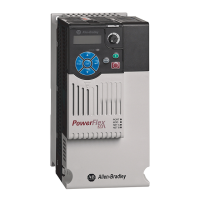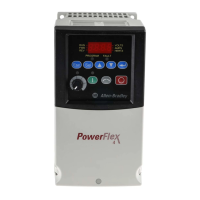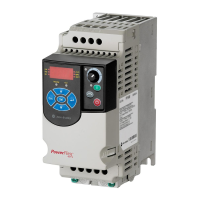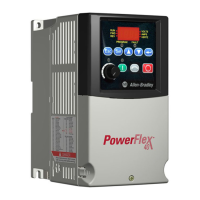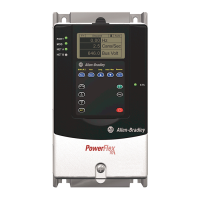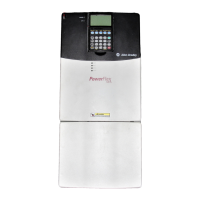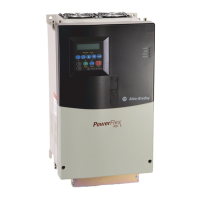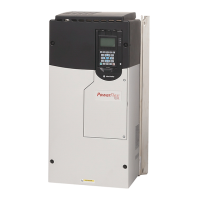Behavior models used in CIP Motion
Rockwell Automation Publication MOTION-RM003I-EN-P - February 2018 83
Because many closed loop motion control applications require near zero control
loop error, this behavior is not desirable. Again, the position and velocity loop
error could be reduced by applying the velocity integral gain control as described
above, but the integrator action is still too slow to be very effective. The preferred
approach with superior dynamic response is to use Acceleration Feedforward.
The Acceleration Feedforward feature is used to generate the bulk of the
Acceleration Reference necessary to generate the commanded acceleration. It does
this by scaling the Fine Acceleration Feedforward generated by the Command
Generator by the Acceleration Feedforward Gain and adding the resultant
Acceleration Feedforward Command signal as an offset to the output of the
velocity loop. With this feature, the velocity loop does not need to generate much
control effort, thus reducing the amount of control loop error.
Theoretically, the optimal value for Acceleration Feedforward is 100%. In reality,
however, the value may need to be adjusted to accommodate variations in load
inertia and the torque constant of the motor. Like Velocity Feedforward,
Acceleration Feedforward can result in overshoot behavior and should not be used
in point-to-point positioning applications.
When used in conjunction with Velocity Feedforward, Acceleration Feedforward
allows the following error of the position or Velocity Control loop to be reduced
to nearly zero during the acceleration and deceleration phases of motion. This is
important in tracking applications that use electronic gearing and camming
operations to precisely synchronize a slave axis to the movements of a master axis.
See also
Position Control Behavior on page 58
Velocity Feedforward on page 60
Another Velocity Control method is the open loop Frequency Control method
associated with so called Volts/Hertz or Variable Frequency Drives (VFDs) that
do not have a current control loop and typically drive an induction motor.
Velocity control with this method is achieved by controlling the voltage and
frequency output of the drive device in some manner where voltage is generally
proportional to frequency. For an induction motor, the velocity of the motor is
determined by the Output Frequency of the drive device divided by the Motor
Pole count. This control method is applicable to Velocity Control applications
that do not require tight speed regulation and therefore do not require a feedback
device.
Open Loop Frequency Control

